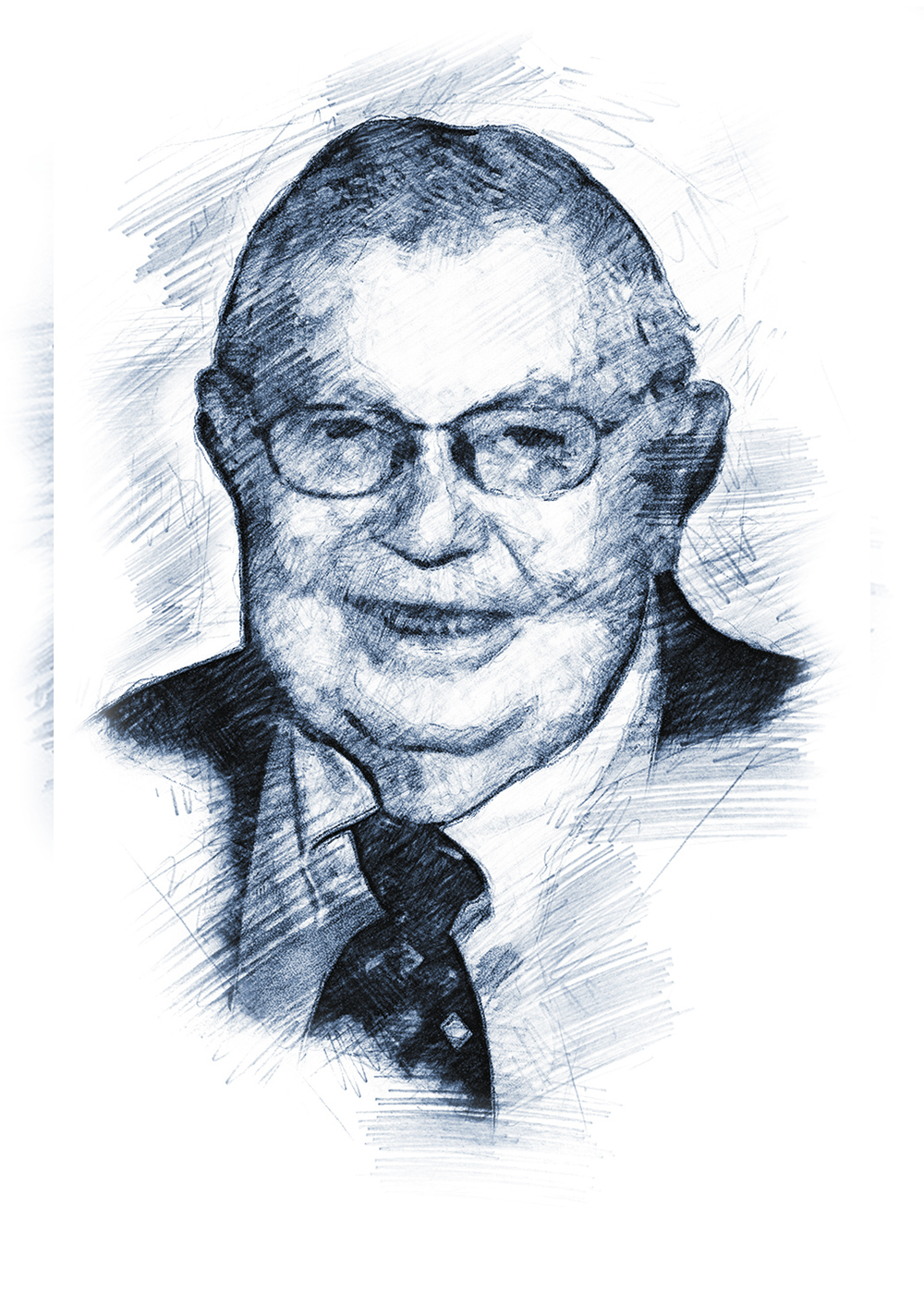
"It’s the right company... the right project...in the right place and in the right time in history for West Tennessee."
— Bill Adams
There would have been no Memphis Megasite had it not been for the Tennessee Valley Authority’s mammoth vision and, especially, the boots-on-the-ground work of two people—then Haywood County May- or Franklin Smith and Bill Adams, TVA’s Target Market Specialist. TVA’s big vision “We have to go back to 2003, really,” Adams told the Brownsville Press during an interview one week after the announcement.
“At that time John Bradley, head of our TVA development, made the blanket decision we would position as many TVA communi- ties as possible for the next wave of automobile assembly plant projects.”
Bradley, Adams said, knew that auto plant development was about to explode in the United States. “Part of my job was to find ready-to-go megasites so we could start marketing them for this next wave.”
Adams’ career, prior to TVA, had focused on recruitment and devel- opment of big auto manufacturing plants. Bradley recruited Adams to help TVA. He joined the utility in August of 2003.
The new TVA executive didn’t waste time. Quickly, he hit the road and air…on the hunt for the right spots.
“At that time, we didn’t have the data sets we have today… back then we collected as much data as we could and then you got in your car, or a helicopter and you traveled and visited sites and made your assessments…”
Adams’ road-trips took him all over TVA’s multistate footprint looking for just the right site. In October of 2003 they flew Haywood County. “Mike Montgomery was in TVA Economic Development. He and I were flying in a helicopter over Haywood County and Stanton, and we spotted this site. After evaluating it we knew it had inherent values to create a great site…location…size… shape… inter-state… rail… topography… and had potential to avoid impacts to the environment like wetlands and floodplains… good land in a good location with the right attributes…we knew it had some potential.”

Bill Adams

John Bradley

Franklin Smith
“When I was thinking about giving up a time or two...he (Adams) talked me out of it.”
— Franklin Smith
Haywood County wasn’t the only place he found, but it was one of his favorites, though it was unusual because it’s in the middle of nowhere as megasites go.
TVA had the right idea but needed structure
Still, TVA didn’t really have the playbook that could be- come, to auto manufacturers, meaningful.
“I came back to John and suggest- ed that while this and other sites had the right bones to potentially be a great megasite, I couldn’t tell him that they would be marketable as is.” So, TVA partnered with a consult- ing firm and three “unnamed automanufacturers” to create the TVA “certified” megasite program.
The megasite accreditation program started in 2004.
Franklin Smith back on the job
By the time Adams completed his initial work and started down the certification trail, former Haywood County Mayor Frank- lin Smith decided to return to his old job and, defeating 7 other mayor want-to-be’s, was elected during a special election in November 2004.
“I was sworn in at 8:30 a.m. and had a meeting at 9 a.m. with TVA,” Smith told the Brownsville Press. The meeting was with Adams.
He (Smith) was a staunch advocate for the megasite certification,” Adams said. Smith said Adams was, too, “When I was thinking about giving up a time or two…he (Adams) talked me out of it.”
The certification is dependent on local leadership. Without it, megasites can’t happen. Control of the property where the mega-employer would locate is, perhaps, the most onerous requirement. Adams said Smith identified the landowners, convinced them to sell and the county commission to fund the land options. “To become certified, you have to place the property under option or own it and Mayor Smith was very instrumental in getting that property under option… he negotiated everything with the landowners….” Adams recalled.
“It’s really an 18-year story. But back in that time you have to give credit to a lot of people who jumped on the vision and Mayor Smith was absolutely the lead and carried the torch getting the land under option and on the market.”
Smith told Brownsville Radio and the Brownsville Press that he hosted a dinner meeting at the Chamber of Commerce for the landowners. It was during that session he disclosed the plan and asked them to consider selling.
It wasn’t clear how the tracts might be valued but Smith said one man exclaimed, “My family won’t take less than $10,000 per acre… that pretty much set the price,” Smith said.
The landowners eventually agreed to provide county government with contracts to hold the property and Smith managed to convince the county commission to front the money—a half-million dollars.
Other early promoters included, Adams said, Brownsville Haywood County Chamber of Commerce Director Sandra Silverstein, Brownsville’s Mayor Webb Banks, and utility manager Regie Castellaw. Leaders from Chickasaw, Forked Deer and Southwest electric co-ops were also key players. “They all gave really strong support… the site would never have been certified without their efforts.”
The options were perhaps the hardest part, but the work wasn’t done. Smith and others had more to prove before certification. “The requirement was that the communities … get those studies done at their expense…We (TVA) paid for the certification process, but the community had to pay for all of that due diligence,” Adams said.
Options secured and other tedium complete, the Megasite in Haywood County passed all the certification tests in July 2006. Still, the future remained fragile the options would eventually expire and with them TVA’s endorsement.
State government stepped in, and the mutation began unsure where the money would come from to close the land deals, Smith lobbied state government. “Lo’ and behold the state decided to buy the property…” he said. “I was never really comfortable with where the money (to close deals) would come from,” Smith said.
In 2009, the state funded the more than $40 million land purchase. It was the first time ever (and since) Tennessee’s government purchased and owned an industrial property. Phil Bredesen was governor and the state’s legislators authorized the funding.

Sandra Silverstein

Regie Castellaw

Webb Banks
The original certification, though already larger than most, wasn’t nearly the size of the final project. “The certified portion of the meg- asite… it was not 4,100 acres it was about half that…” Adams said. The eventual transactions went beyond the ground held by the options. “Sometime the state didn’t have a choice… the landowners said, ‘It’s all or nothing…’” Haywood County
Government was unlikely to authorize and couldn’t afford the multi-million-dollar investment. Were it not for state government’s venture, the options would likely have expired and the opportunity missed.
“It is very unusual for the state to own…but I think it was to make sure the opportunity didn’t slip away… because property options do expire and sometime renewing them can be twice as hard as it was the first time,” Adams speculated. “And it only takes one landowner to disagree or not want to option the property to really cascade the failure of the site…and I believe they didn’t want that risk to be there.” So, the state’s economic leaders, led by then by Commissioner of Economic and Community Development Matt Kisber and Gov Phil Bredesen, pressed on. “They had a lot of foresight here… they knew to control the land from interstate to rail, they could provide the max flexibility for a very large-scale project,” Adams remembered.
The in-between years Certified and the land transferred to its new state government owners, Haywood County government with its option money returned, the years of trial, doubt and not so occasional disappointment began.
“Again, I look at this as an 18-year-old story… and the chapter that began with ECD purchasing the property that’s a long-long chapter,”
Adams said. The period included struggles over funding infrastructure, criticism about the monstrous size of the tract and a years-long wrangle over the sewer system. Political administrations fighting for the site included democrats and republicans.
“That took a lot of commitment and money to make that transition. It was gutsy… took a lot of resolve… and took a long-term view… States don’t normally invest in property to market… especially of this magnitude… but they showed remarkable faith… resiliency in the face of all of the challenges and you simply have to admire that,” Adams said.
“…From buying the site to making investment in roadways…and right-aways… they took the site from a baseline they achieved through certification and transitioned to a very well positioned property…so they really turned the dial with those investments and… taking the chance on the site.” Over the years, megasite promoters tolerated disapproval including regular complaints about over-investing in too many acres and building oversized infra- structure. Some wanted to “bust” the site up, making it available to smaller manufacturers dumping the original model.
It was during the same period that Mayor Smith broke ranks with his Democratic party, campaigning for Governor Bill Haslam’s reelection. Smith said it was because Haslam, a Republican, had gone to bat for the megasite time after time.
Why TVA?
It’s not all about selling power. When developed in the 1930’s TVA’s mission—the same today Adams says—was to help bring economic prosperity through electrification to rural areas.
“Economic development is the mission of TVA… looking for high paying jobs and capital investment… We are looking for (economic) trajectory change…
“Our mission every day is to be a catalyst to get things done for our communities.”
And what does Adams think about the result, Blue Oval City? “It’s the right company… the right project… in the right place and in the right time in history for West Tennessee.”



